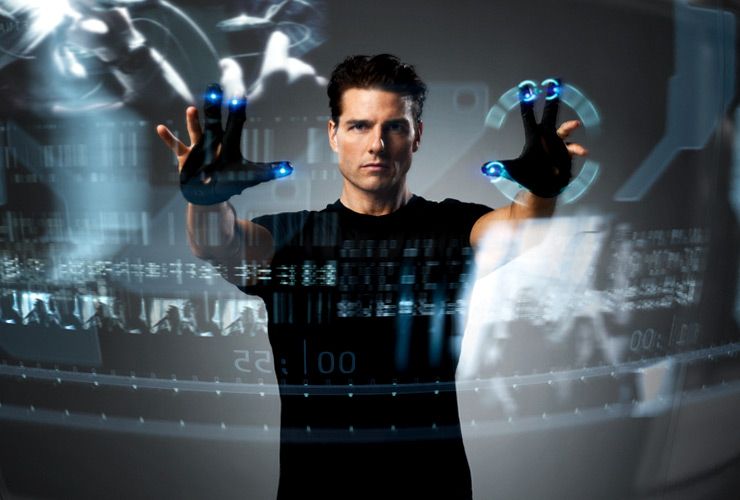
I want, so badly, for The Doctor Who Thought Experiment to be an ‘80s proto-ambient band I can taste it.
Hello everyone! Welcome to Not The Fox News. Let me tell you how I can fix Doctor Who.
Well actually everyone who’s alive and has seen it can fix Doctor Who. In fact, the vast majority of them all have their plan ready for when the phone finally rings and the Queen, because why not, calls and asks them to take over the show. It’s the central glory, and biggest weakness, of the thing; Doctor Who is that old quote about science fiction being whatever you’re pointing at when you say ‘science fiction’ turned into a five decade and counting TV show. It’s everything to everyone which means, some of the time, it’s also nothing to everyone.
Now, before you start writing angry blogs (Fire up the ‘In Which’s!’ Activate the ‘On The Subject Of’s!) let me reassure you. I don’t hate the show. I love it. Always have done. Doctor Who is one of the pillars of fictional wisdom that my entire approach to pop culture is based on. I was a Sylvester McCoy kid, owned ridiculous amounts of Big Finish audios and have devoured every single episode of the new show. Some episodes I’ve adored, some I’ve really disliked. If I’m honest, the last year or so of Matt Smith’s run has been, for me, often very very difficult to love. But that’s me. It’s not necessarily you. Like I say, something to everyone, nothing to everyone. You experience what you experience and that’s just as valid as what anyone else does.
With that in mind, a disclaimer and a PSA before we go any further. This blog is not about a single producer’s period of the show. It’s about the show itself and a particular structural tic that has lasted fifty years that, on its removal, would make Doctor Who a very different beast.
That out of the way, let’s talk about what happens when you change one setting on the control panel of this deeply eccentric, occasionally rickety, magnificent old TV show. It’s not even a big control either, just taking a single dial and turning it one setting to the left. All we’re doing in fact is changing the RECURRING MONSTERS setting from ‘On’ to ‘Off’.
Deep breath. Everyone okay so far? Cool, let’s continue.
So what does that mean? Well, for a start let’s take a look at the surprisingly granular settings on that dial. Right now it’s set to make sure no monster ever appears past the era of the Doctor they first appeared with. That means that the Daleks and Cybermen for example are now solely 1st Doctor monsters.
Deep breath again. Everyone still okay?
Moving on it also means the Sontarans are an exclusively 3rd Doctor monster, as are the Autons. It also, and this is a big one, means The Master is tied exclusively to the 3rd Doctor’s run. Let’s explode that one out a little bit. Tom, could you?

Tom Cruise! Is! Tom Cruise! IN! Doing A Science!
Thanks, little fella.
Now, there’s an interesting structural thing you can do on this setting that the Master perfectly embodies. You can take the standard three act dramatic structure (Or Pledge, Turn and Prestige depending on your preference) and expand it into a series of stories rather than a single one. So, the Master is introduced with the Doctor in Terror of the Autons and plagues him all the way through to his final appearance in Frontier in Space, or, had Roger Delgado, the actor who originally played him lived, in the slated story The Final Game. That first Pertwee season is very tightly plotted anyway, but adding in the ticking clock of The Master as a constant and short term threat would only make it more so. He becomes Moriarty to the 3rd Doctor, leading to the opportunity to go full Reichenbach Falls at the end of the season. Just in space.
The 4th Doctor fares even better, especially as his run is full of Lovecraftian done-in-ones anyway. Remove the Daleks and the Cybermen and you give Fendahl, Sutekh and Morbius room to breathe to name but three. The 5th Doctor’s run arguably does this anyway, with the Black Guardian trilogy of stories acting as a thematic sequel to the Key To Time season whilst still working in their own right.
Monsters may be one shots, but Macguffins are forever, especially when you can come up with a new twist on them.
The 6th Doctor toys with this idea, both through Sil’s appearances and structural elements of the Trial of a Time Lord season, with locations and characters being revisited. Oh sure, a good chunk of the end in particular really doesn’t work but there’s some interesting stuff in there. Likewise the 7th Doctor and the eventual reveal on Ace, and the Gods of Ragnarok. It may be the softest soft arc in all of Softarcingtonshire but there’s a definite sense of design to the thing that really lifts every story in there.
The 8th we can’t really do anything with, because whilst he has a vast audio and book career he’s on screen for 1.25 stories. Likewise 9, whose run is massively altered (OR IS IT?! As we will see) by this process. Sure, the Slitheen turn up in The Sarah Jane Adventures but for the most part his stories are again, done-in-ones. It’s only 10 and 11 who this really affects, with the Weeping Angels becoming a 10 exclusive monster and some other Godzilla vs King Ghidorah faceoff required for Doomsday and Army of Ghosts.
It’s an interesting setting, but there’s an argument for it causing as many problems as it solves. It definitely sidesteps a lot of the often dull ‘legacy’ monster stories and gives other monsters a chance to breathe, but it also destroys many of the show’s finest moments. A good friend of mine pointed out any rule that meant he didn’t get the superlative 5th Doctor-era Cyberman audio story Spare Parts was one he would rail against and I’d certainly be sorry to see the world’s best trash talk from Doomsday go, or indeed any of the Dalek stuff in the 9th Doctor run.
Just the best ‘OOOOOOOOOOOOOOOOO! Get YOU!’ moment with added interstellar death machines ever produced.
So, what to do? Lean on occasionally box ticking legacy stories or untried newbies? Turn to the reliable and often dull past or the exciting and often broken future?
Hey look, this thing has other settings!
Change it so no monster can appear with two concurrent Doctors and it’s a very different story or indeed five decades of stories. Take the Daleks for example. After their memorable 1st Doctor run they’re rested until, during the 4th Doctor era, the script for Genesis of the Daleks is written. Not only does this restore one of the show’s best stories to existence but it gives it huge amounts of added emotional weight. The Doctor is not only asked to commit genocide he’s asked to do so on a race that he’s not dealt with for three lifetimes. The ethical dilemma isn’t just focused here it’s sharpened to a point that redefines the Daleks, the Time Lords and the 4th Doctor, all at once.
In fact, let’s ride the Skaro Express all the way up to the present day. You can close the Daleks down again quite comfortably at the end of Destiny of the Daleks and mothball them until the 6th Doctor. I say the 6th, because one of the surprisingly recurrent themes in the 6th Doctor run is illegal experimentation with time travel. I wrote the upcoming 6th Doctor Sourcebook for the Doctor Who RPG and that motif didn’t so much pop out at me as travel back in time and write itself into my DNA it’s so prevalent.
This means the 6th Doctor’s run is the perfect opportunity to not only bring the Daleks back but largely sidestep their meandering civil war plot and instigate the Time War as they get their…let’s go with plungers…on new time machines. You can even, at this point, trail their eventual return as they vanish off into the Vortex and the show gets ignominiously cancelled.
Then, they return for the 9th Doctor and their impact is doubled. Suddenly, you’re not only using the show’s now established format of Doctor-hopping monsters but the hiatus itself to give your returning villains extra impact. Even better? This is the point you break the rules, bringing them back for 10, and 11 too, as they’re scattered to the temporal winds and become all but impossible to permanently destroy. They become not just the definitive Doctor Who monster but one that’s woven itself into the fabric of the show’s universe in order to survive, rewriting the structure of the show itself so they’re always there, like Banquo’s amazingly angry, metallic alien death-ray wielding ghost.
Of course again, there are problems. This way you don’t get Remembrance of the Daleks for one, unless it’s that 7,10 and 11th Doctor version that plays sometimes in my head. But this approach mobilizes everything about the show from its content to its format to the time it’s been on and off air into things that make both Doctor Who, and its villains, better. Absence doesn’t necessarily make the heart grow fonder but familiarity can, and does, breed contempt especially in fiction.
Everyone knows how to fix Doctor Who, and everyone’s ideas are different. The show hasn’t so much grown as evolved over the decades and half the fun in it can often be imagining what could be done with it instead of what has been. Doctor Who changes constantly, and is defined as much by its variety as its longevity. Perhaps one day the way ‘legacy’ monsters are approached will change. Until then though, this dial needs to go back to its original setting. That tall chap on the other side of the console’s getting fidgety and we should leave him to it. He’s going to have a busy year…
